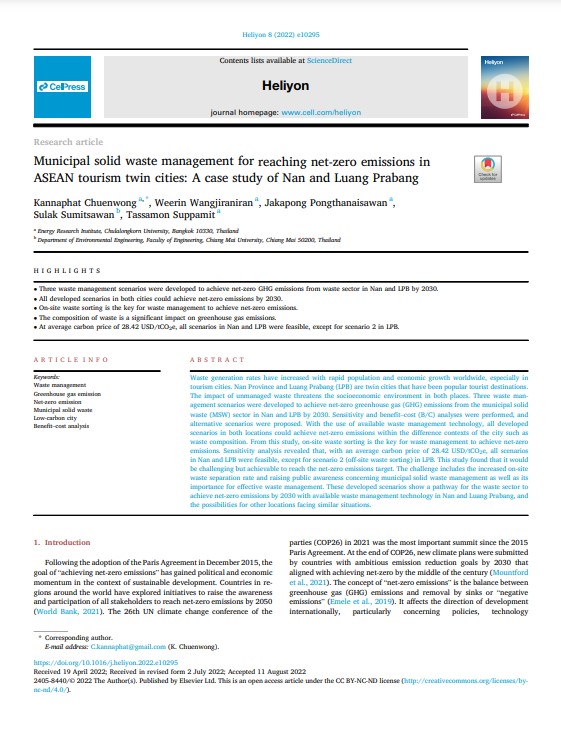
Keyword(s)
Author(s)
a) Kannaphat Chuenwong, a) Weerin Wangjiraniran, a) Jakapong Pongthanaisawan, b) Sulak Sumitsawan, a) Tassamon Suppamit
Publisher
Published Date
Access
DOI
Waste generation rates have increased with rapid population and economic growth worldwide, especially in tourism cities. Nan Province and Luang Prabang (LPB) are twin cities that have been popular tourist destinations. The impact of unmanaged waste threatens the socioeconomic environment in both places. Three waste management scenarios were developed to achieve net-zero greenhouse gas (GHG) emissions from the municipal solid waste (MSW) sector in Nan and LPB by 2030. Sensitivity and benefit–cost (B/C) analyses were performed, and alternative scenarios were proposed. With the use of available waste management technology, all developed scenarios in both locations could achieve net-zero emissions within the difference contexts of the city such as waste composition. From this study, on-site waste sorting is the key for waste management to achieve net-zero emissions. Sensitivity analysis revealed that, with an average carbon price of 28.42 USD/tCO2e, all scenarios in Nan and LPB were feasible, except for scenario 2 (off-site waste sorting) in LPB. This study found that it would be challenging but achievable to reach the net-zero emissions target. The challenge includes the increased on-site waste separation rate and raising public awareness concerning municipal solid waste management as well as its importance for effective waste management. These developed scenarios show a pathway for the waste sector to achieve net-zero emissions by 2030 with available waste management technology in Nan and Luang Prabang, and the possibilities for other locations facing similar situations.